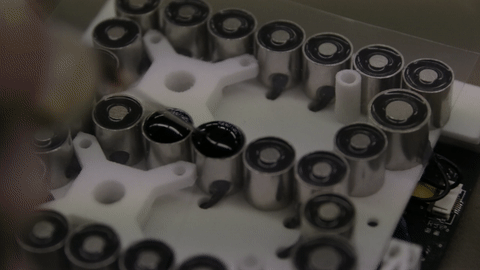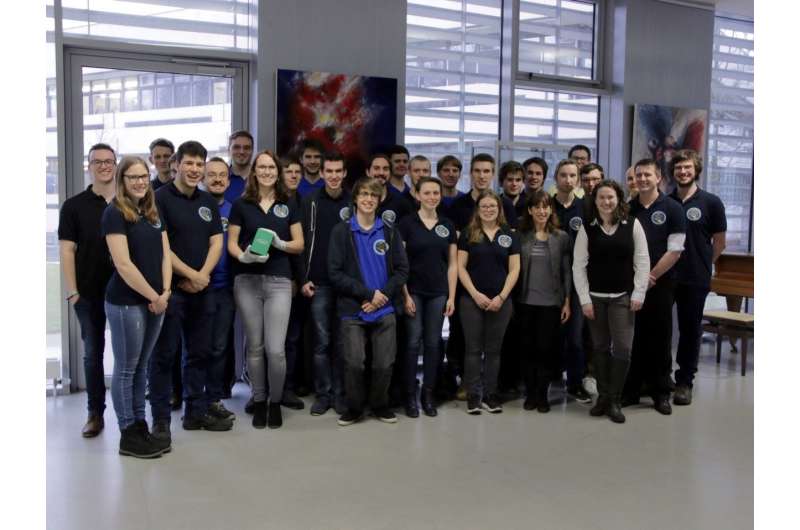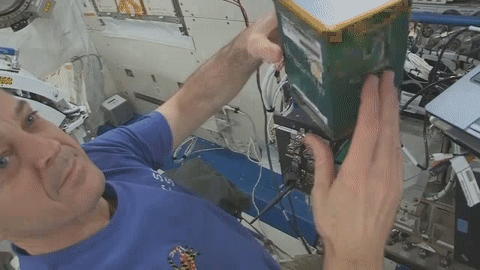Ironing out the difficulties of moving fluids in space

Fluid flows downhill—at least it does on Earth. Fluid movement becomes much more complicated in space, and that creates challenges for systems that rely on pumping fluids around for thermal control, engine propellants and other functions.
An investigation aboard the International Space Station studies moving fluids with the power of magnets instead of using pumps with mechanical moving parts. Ferrofluids contain small iron-oxide particles that can be magnetized. For the PAPELL experiment, researchers use an electromagnetic field to manipulate and move these ferrofluids in a variety of different conditions. Cameras and sensors monitor the movement of the fluids across grids of electromagnets and through pipes.
"Mechanical components always pose a risk of failure, a problem that needs to be avoided on space missions, especially long ones," says Franziska Hild, one of the team of 30 students of the University of Stuttgart's Small Satellite Student Society (KSat e. V.) that developed and is conducting the investigation. "Use of a non-mechanical pump extends the lifetime of the system, allowing its use on long-term missions for thermal or propellant management."
Reliable, efficient pumping and other fluid transportation tasks are particularly important in the design of next-generation space vehicles. The ability to move fluids smoothly from one place to another in microgravity could eliminate many potential wrinkles in space exploration.

The exact behavior of a liquid under magnetic influence in microgravity is part of the investigation, adds Manfred Ehresmann, another of the investigators. "Currently, we are uncertain whether microgravity will increase or decrease the magnetic pump's performance. Easier movement in microgravity may aid movability of individual droplets, or hinder our manipulation capability by increasing the distances to the electromagnets."
In addition to advancing the technology for design of this new class of pumps in space, PAPELL may help solve other space-based fluid transport problems, says investigator Kira Grunwald. A low-wear, low-vibration, and low-maintenance pumping system could improve the performance and expected lifetime of space stations, satellites and space telescopes.
Pumps that require little maintenance and have extended operational lifetimes also have many potential applications on Earth, such as for pumping water in remote areas. The lower noise level of magnetic pumps also improves safety and comfort in the workplace, whether in space and on the ground.
This investigation was sponsored by the ISS National Lab, which is managed by the Center for the Advancement of Science in Space (CASIS). The experiment uses a NanoLab Platform inside a NanoRacks Module aboard the space station.

Provided by NASA





















